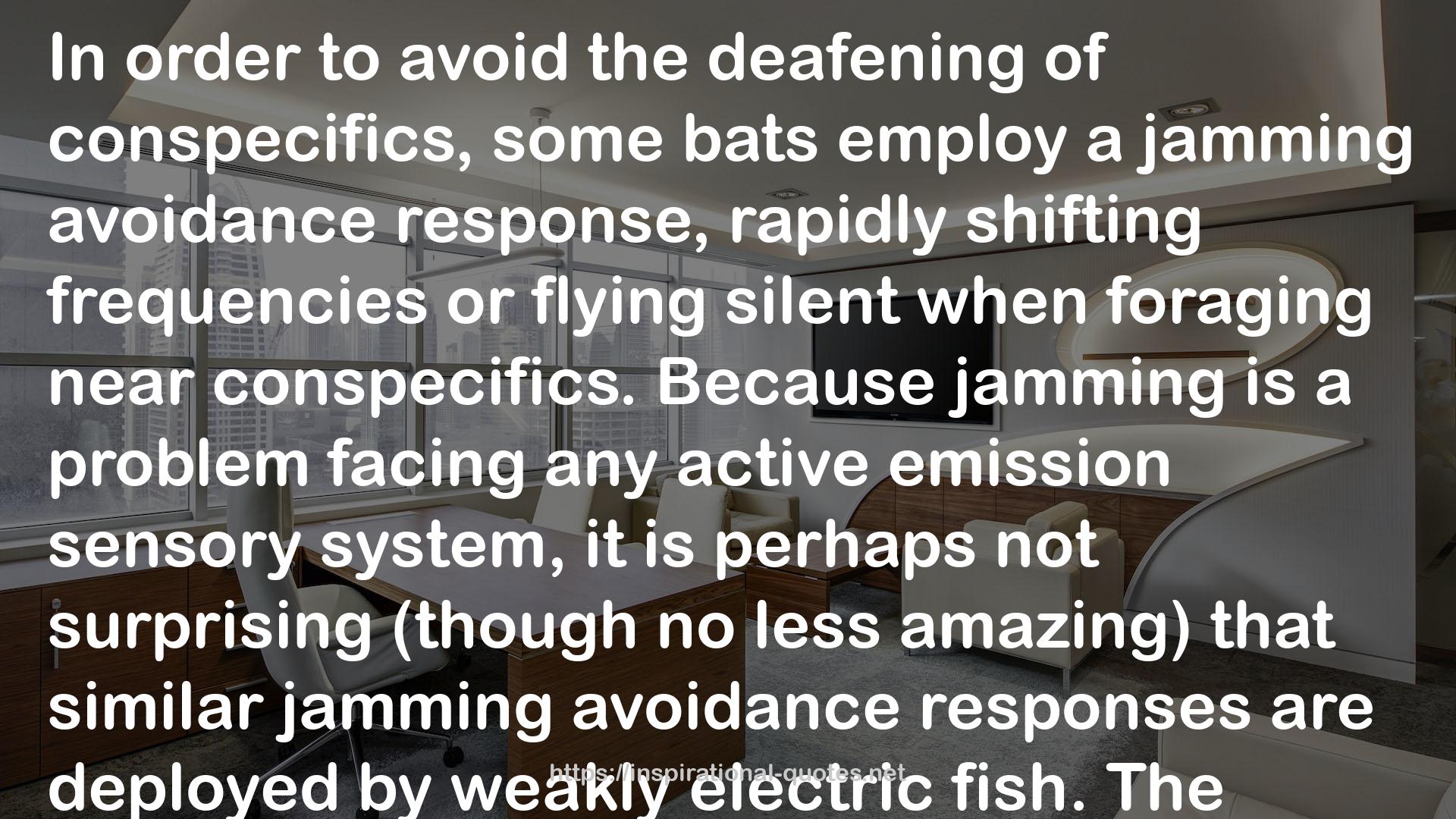" In order to avoid the deafening of conspecifics, some bats employ a jamming avoidance response, rapidly shifting frequencies or flying silent when foraging near conspecifics. Because jamming is a problem facing any active emission sensory system, it is perhaps not surprising (though no less amazing) that similar jamming avoidance responses are deployed by weakly electric fish. The speed of sound is so fast in water that it makes it difficult for echolocating whales to exploit similar Doppler effects. However, the fact that acoustic emissions propagate much farther and faster in the water medium means that there is less attenuation of ultrasound in water, and thus that echolocation can be used for broader-scale 'visual' sweeping of the undersea environment.
These constraints and trade-offs must be resolved by all acoustic ISMs, on Earth and beyond. There are equally universal anatomical and metabolic constraints on the evolvability of echolocation that explain why it is 'harder' to evolve than vision. First, as noted earlier, a powerful sound-production capacity, such as the lungs of tetrapods, is required to produce high-frequency emissions capable of supporting high-resolution acoustic imaging. Second, the costs of echolocation are high, which may limit acoustic imaging to organisms with high-metabolisms, such as mammals and birds. The metabolic rates of bats during echolocation, for instance, are up to five times greater than they are at rest. These costs have been offset in bats through the evolutionarily ingenious coupling of sound emission to wing-beat cycle, which functions as a single unit of biomechanical and metabolic efficiency. Sound emission is coupled with the upstroke phase of the wing-beat cycle, coinciding with contraction of abdominal muscles and pressure on the diaphragm. This significantly reduces the price of high-intensity pulse emission, making it nearly costless. It is also why, as any careful crepuscular observer may have noticed, bats spend hardly any time gliding (which is otherwise a more efficient means of flight). "
― , Contingency and Convergence: Toward a Cosmic Biology of Body and Mind
